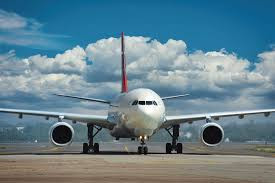Event Details
On completion of this course, participant should be able to:
• Know the functions of Human Resources (HR) departments within aviation organizations
• Be able to carry out recruitment for the aviation industry as part of the HR team
• Understand employment legislation relating to the aviation industry
• Know company employment policy and standards.
CONTENT:
KNOW THE FUNCTIONS OF HUMAN RESOURCES (HR) DEPARTMENTS WITHIN AVIATION ORGANISATIONS
The functions of HR:
- Business partnership, e.g. as part of the business strategy, planning for short and long term objectives, working with senior leaders and management, reporting and management processes
- Human Capital Management, e.g. people as assets, hiring, training, change management, legislation, policies and procedures
- Resourcing and talent planning, e.g. recruitment, attracting the right people, brand compliance, equality and diversity
- Learning and development, e.g. compulsory training and refreshers, job specific training, industry related qualifications, CPD (Continuous Professional Development), professional qualifications
- Support, e.g. admin, self-service portals
Role and responsibility of HR:
- Recruitment, e.g. advertising, interview, appoint, induction
- Employee retention and engagement, e.g. on-boarding, reviews, targets, KPIs (Key Performance Indicators) reward, compensation and benefits, development, progression, incentives
- Employment legislation, e.g. protected characteristics, data protection, background checks, employment rights, health and safety
- Manage employment procedure, e.g. role of line manager, absence, leave for special circumstances, grievance, disciplinary, complying with company standards, redundancy, termination, retirement, off-boarding
BE ABLE TO CARRY OUT RECRUITMENT FOR THE AVIATION INDUSTRY AS PART OF THE HR TEAM
Plan recruitment:
- Job description, e.g. main responsibilities, essential and desirable skills and qualities, hours, location
- Advertise, e.g. budget, trade publications, TV/radio, social media, in-house, recruitment agencies, recruitment fairs
- Shortlist applicants, e.g. criteria for success
- Prepare interview, e.g. location, documents, interview panel, group interview, telephone/video selection, selection activities
Selection process:
- Assess candidate, e.g. cv, group task, aptitude test, individual interview, telephone/video screening, it assessment
- Confirm qualifications, e.g. academic, training, licenses, experience, employment history, references
- Make a decision, e.g. offer employment, notify unsuccessful candidates
- Administration, e.g. notify department head, payroll, security
UNDERSTAND EMPLOYMENT LEGISLATION RELATING TO THE AVIATION INDUSTRY
Employment legislation:
- Pre-employment checks, e.g. employment history, background checks, references
- Training, e.g. required to obtain airport/airline pass, to comply with current legislation, job-specific
- General, e.g. minimum wage, discrimination, data protection, employment contract, working hours,
- Minimum age, medical checks (vision, hearing)
Impacts of compliance:
- Negative impacts, e.g. recruitment delays (references, employment history), expense (to applicant, to
- Employer, training requirements), restricts recruitment pool (security, health, age)
- Positive impacts, e.g. avoid prosecution, filters out inappropriate candidates
KNOW COMPANY EMPLOYMENT POLICY AND STANDARDS
Company policy and standards relating to personnel:
- Behavior, e.g. to internal and external customers, property, absence, sickness, misconduct
- Health and safety, e.g. legal standards, company standards
- Security, e.g. legal standards, company standards (property, data, revenue)
- Maintain company policy and standards relating to personnel:
- Safety management system (SMS), e.g. risk assessment, intervention, appraisal, disciplinary procedures
- Training, e.g. new skills, recurrence, behavior
- Feedback, e.g. from staff, from supervisors, from managers, from trade unions
Sources of information and advice:
- Regulatory bodies, e.g. Civil Aviation Authority (CAA), UK Regulator for Health and Safety, Department
- For Transport (DFT), Industry Trade Associations
- Trade bodies, e.g. Associations for HR Professionals
- Trade unions generic or specific c to relevant professions and vocations
TRAINING METHODOLOGY:
The training methodology combines lectures, discussions, group exercises and illustrations. Participants will gain both theoretical and practical knowledge of the topics. The emphasis is on the practical application of the topics and as a result participant will go back to the workplace with both the ability and the confidence to apply the techniques learned to their duties.
This course is available in the following locations:
Nigeria - $3500
Ghana - $6500
Rwanda - $7500
UK - $8500
USA - $8500





